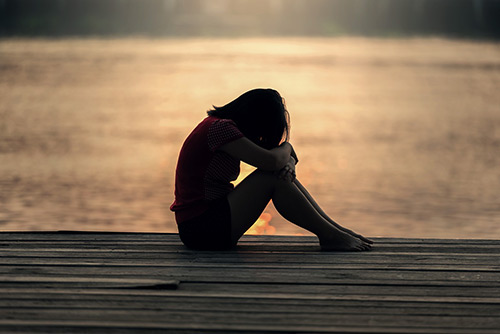
“The word ‘happy’ would lose its meaning if it were not balanced by sadness.” – Carl Jung
We’ve all been there. Sadness. Sometimes, it is situational (a break-up, grief, loss of any sort), and sometimes, it seems like the norm. When the latter is the case (6 months or longer and is not attributable to an adverse life experience or situation), then you might want to seek help for appropriate treatment for depression.
Sadness gets a bad rep when, in actuality, it is inherently an exquisite feeling. Many of the world’s greatest songs, poems, books, movies, and works of art reflect this universal emotion. It connects us and underscores compassion and empathy, which allow us to feel understood and validated. Sadness is natural, if you will, yet many do their best to deny it or suppress it, which unfortunately allows sadness to linger longer and cause more pain both physically and mentally.
I have found that the first step is to identify the feeling, validate it, and process it. Feelings are not facts. They are temporary but always have an important message to communicate. While none of us want to receive negative messages, they are vitally important. E.g., someone banging on the door and screaming “Fire!” is not a pleasant message, but it is a lifesaving one. Or a red light flashing on your car’s dashboard screen; not pleasant, but it alerts us to avert a breakdown. All of our feelings are helpful even when they are unpleasant. There is a gift in all of them. Judging them, avoiding them, denying them only delays and exacerbates our pain. Instead, try asking yourself questions such as: “What is really underneath this feeling? What is missing? What is not working for me at this time? What are the unhelpful beliefs I have taken on? Who can help me sort this out and learn from it?”
One form of sadness to be on the lookout for, especially at this time of year when Daylight Savings Time is ending, is Seasonal Affective Disorder (S.A.D.). According to Psychiatry.org, this condition affects about 5% of adults and lasts for about 40% of the year. Treatment is possible and typically comprises light therapy, exposure to more sunlight, self-care in the form of sufficient exercise, proper nutrition, enough sleep, fun, and a positive support system. Also, viewing your favorite summer movies, listening to beach music, having a luau in your home, literally lightening up your environment (flowers, lighter colors, etc.), and even planning a tropical vacation during the winter months can all go a long way to decreasing SAD symptoms. Of course, if you are still suffering, see a medical doctor. Medication (including holistic ones) may be appropriate for you.
Happy Fall, Y’all!
“Look how a single candle can both defy and define the darkness.” – Anne Frank
As always, I offer a complimentary 30-minute phone consultation on hypnosis or psychotherapy for addictions, trauma recovery, and more. Please get in touch by phone or email.

